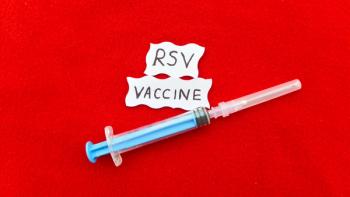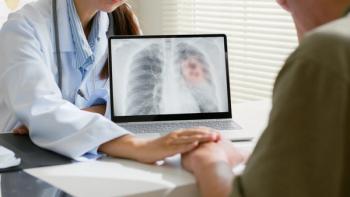
Patient and Provider Safety is at the Core of Mass COVID-19 Immunization Effort
As new variants of the virus come to rise, it is crucial to continue to address the safety concerns with mass COVID-19 immunizations during the pandemic as well as provide solutions to reduce the exposure and spread of the virus.
We are now in the second year of the COVID-19 pandemic. Although the virus is now better understood, outcomes in reducing transmission, morbidity, and mortality of the virus can be enhanced by following proper precautions, such as safe distancing and using personal protective equipment when in public.1
Currently, there are 3 authorized COVID-19 vaccines available in the United States: Pfizer-BioNTech, Moderna, and Johnson & Johnson/Janssen. People as young as 16 years old are advised to get vaccinated as soon as they can and continue to follow the virus precautions post vaccination.2
As new variants of the virus come to rise, it is crucial to continue to address the safety concerns with mass COVID-19 immunizations during the pandemic as well as provide solutions to reduce the exposure and spread of the virus.
Reducing Risk of Exposure and Spread of COVID-19
The CDC encourages people to act against the virus and protect themselves and others by:3
- Ages 2 and up: cover nose and mouth with a mask when in public
- Keep 6 feet (2 arms-length) distance from those not in your household
- Vaccinate
- Avoid poorly ventilated spaces and large gatherings
- Wash hands often and use at least 60% alcohol-based sanitizer when soap and water isn’t available
- Disinfect surfaces daily
To be a candidate to receive a COVID-19 vaccine, patients must not have symptoms or be under quarantine. If a patient has received a diagnosis of COVID-19 infection, they must delay vaccination by 90 days.4 According to the latest CDC recommendations, everyone over 16 years of age is eligible and strongly encouraged to receive the COVID-19 vaccine.5
As a novel infection, information on COVID-19 testing options continue to develop. Currently, the only diagnostic tests available are molecular tests and antigen tests.
Molecular tests look for genetic material only found in the virus and can be used to diagnose a current infection; however, they do not check for antibodies, which indicate a past infection.
This type of test is performed by obtaining a specimen (via nasal swab, throat swab, saliva, or any other bodily fluid) and sent to a lab for testing.6 Antigen testing, on the other hand, looks for certain proteins (antigen) from the virus. The results for the antigen test are much quicker to obtain; however, they are not favored by the FDA due to the higher chance of attaining a false negative results than the molecular test.6
Per the CDC, patients who have symptoms of COVID-19, do not have symptoms but tested positive for COVID-19, or feel they may have been exposed to SARS-CoV-2—the virus that causes COVID-19—should isolate at home.7 To assist with isolation orders, several companies have developed at-home diagnostic COVID-19 tests that can provide results in 2 days.
For example, Picture Genetics has developed a molecular COVID-19 diagnostic test that allows patients 18 years of age and over to collect a nasal specimen on their own and ship it back to a lab. Individuals must fill out a brief eligibility questionnaire to order the at-home test.8
Ordering an at-home test such as this may be beneficial because it reduces the risk of pathogen exposure to the individual and others; however, the self-test technique and cost could be some limitations.For example, the cost of the Picture Genetics test is $119 and may not be covered by insurance.8
The convenience and limitation to exposure afforded by at-home tests should be weighed against the cost since many insurances cover the majority of co-payments for COVID-19 tests administered at authorized facilities.9
COVID-19 Vaccines, Administration and Observation Post Administration
The FDA has released an Emergency Use Authorization (EUA) for 3 vaccines: Pfizer-BioNTech COVID-19 Vaccine (BNT162b2; Pfizer-BioNTech), Moderna COVID-19 Pfizer Inc (mRNA-1273; Moderna), and Johnson & Johnson (JNJ-78436735; Jansen).10,11,12,13
These vaccines are not interchangeable and have certain differences. Additionally, health care teams must follow best practices for storage, handling, and administration of vaccines. More information on these COVID-19 vaccines, including those still in development, can be found on
The Pfizer-BioNTech is a 2-dose vaccine separated by 21 days, authorized for people aged 16 years and older. Moderna is also a 2-dose vaccine, however it is authorized for people 18 years of age and older.11,12
More recently, Johnson & Johnson received EUA for the single-dose Janssen COVID-19 Vaccine (disabled adenovirus) for individuals 18 years of age and over. This vaccine has gained popularity throughout the public out of convenience, but on April 13, the vaccine administration for Janssen was placed on pause due to several cases of a rare blood clot, cerebral venous sinus thrombosis. The pause was subsequently lifted on April 23.13,15,16
For people who have received this vaccine more than 3 weeks ago, the chances of a blood clot are very low. For those who have received the vaccine within the past 3 weeks, the chances are low as well; however, patients should be monitoring for symptoms such as severe headache, blurred vision, leg swelling, severe abdominal pain, and chest pain. Patients with these symptoms should seek medical attention right away.17
Generally, the COVID-19 vaccines are considered safe. Regardless of the vaccine, vaccination eligibility is dependent upon the answers in vaccination screening forms, absence of COVID-19 symptoms, and scheduled appointments to be immunized.18
There are several ways to find an available vaccine: contacting a local pharmacy, keeping up to date with local news about vaccination clinics, and by visiting VaccineFinder.org.19
Appointments are made by phone or online depending on the policies of the facility in which the vaccine is being administrated. Because of the large volume of reserved appointments, longer wait times and inability to access the appointment center should be expected. For those who can obtain an appointment for vaccination, they should be expected to follow safe check-in procedures, such as wearing a mask that covers the nose and mouth and remaining 6 feet apart from others.15
Vaccine check-in and check-out procedures vary by state, county, and location of the vaccine administration. After receiving the vaccine and prior to leaving the vaccine site, patients must be provided with a personal verification card that has record of the vaccine administered, date of administration, and name and location of administration place. Patients should also obtain the vaccine EUA informational fact sheet for their knowledge.19
Regarding the second dose of the COVID-19 vaccine, health care workers must inform patients to return for their second dose of the vaccine in 21 days for Pfizer-BioNTech vaccine or 28 days for Moderna vaccine.11,12
Additionally, the health care provider must inform all patients about a voluntary program called V-safe, which is a smartphone tool that utilizes surveys and personalized check-ins, and allows patients to report any adverse events that may occur post-vaccination. This tool provides patients with information about the new vaccine and its effects on people, and it also reminds them about receiving their second dose.20
Currently there is no known evidence as to how long the COVID-19 vaccine protects individuals. In a situation when an individual had COVID-19 in the past, it is recommended they still get vaccinated against the virus.21 After vaccination, patients are still required to take the same precautions towards COVID-19 prior to receiving the vaccine.
These precautions include wearing a mask, keeping distance of at least 6 feet from people they do not live with, and practicing good hygiene by washing hands often.22 More information about COVID-19 vaccines and administration could be found at:
Personal Protective Equipment Supplies for Health Care Worker Protection
To protect themselves and prevent the spread of COVID-19, health care workers must use proper personal protective equipment (PPE). As such, the Occupational and Safety Health Administration (OSHA), developed requirements for the use of PPE depending on the level of patient care, including type, condition, and amount of exposure to the hazardous agents.
Meng, et al, developed 3 levels of PPE for health care workers based on regulations established in a hospital in Wuhan, China.23 For example, level 3 recommendations for those physicians who have direct contact with patients with confirmed or suspected COVID-19 infection include the use of respiratory and eye protection, shoe and head covers, gloves, and scrubs.2
It is important for health care workers to protect themselves with PPE and be trained on the safe handling of all PPE. At the start of the pandemic health care workers were struggling with a shortage of protective supplies, such as masks and gloves.
One way to avoid such shortages is to mitigate overuse and incorrect handling. In the event of shortage, there are some PPE that may be reused, however, they put individuals at greater risk for the exposure to pathogens. Some PPE that may be reused, but not recommended, are goggles, masks, and isolation suits. The CDC recommends the following PPE for COVID-19 vaccine administration: face masks, eye protection, and gloves (Figure).2
COVID-19; coronavirus disease 2019; PPE, personal protective equipment.Repurposed with permission from the CDC. Personal protective equipment. Updated November 19, 2020. Accessed April 22, 2021.
Glove protection is not required unless the person administering the vaccine is likely to come in contact with potentially infectious bodily fluid or has open lesions on their hands.25 As a method of conservation, the FDA has recognized several strategies to reuse gloves to assist during times in which there is limited supply.26
If the gloves supply is on the verge of shortage, health care workers are able to use them between patients if there is no known infectious disease, but the gloves must be cleaned prior to the next patient.26,27 Cleaning gloves, especially with alcohol-based disinfectants, degrades the quality of the glove and is not recommended.25 The CDC does not recommend reusing gloves unless properly sanitized between patients.27
With this being said, it is crucial to provide health care workers with the availability of PPE to continue to care for patients safely. Having available supply of quality PPE and accessibility are positive measures toward preventing the spread of COVID-19 during mass COVID-19 immunization effort.
*Data current as of April 23, 2021
About the Authors
Sweta Andrews, PharmD, MBA, BCACP, is an Associate Professor at Larkin University, College of Pharmacy in Miami, Florida.
Anna Pozdnyakova is a PharmD candidate (Class of 2022) at Larkin University, College of Pharmacy
References
- Dooling K. Phased Allocation of COVID-19 Vaccines. Centers for Disease Control and Prevention. https://www.cdc.gov/vaccines/acip/meetings/downloads/slides-2020-12/slides-12-20/02-COVID-Dooling-508.pdf. Published December 20, 2020. Accessed April 23, 2021.
- Vaccines for COVID-19. Centers for Disease Control and Prevention. https://www.cdc.gov/coronavirus/2019-ncov/vaccines/index.html. Accessed April 23, 2021.
- How to Protect Yourself & Others. Centers for Disease Control and Prevention. https://www.cdc.gov/coronavirus/2019-ncov/prevent-getting-sick/prevention.html. Accessed April 23, 2021.
- Mayo Clinic News Network. Mayo Clinic answers questions about COVID-19 vaccine. Medical Xpress - medical research advances and health news. December 14, 2020. Accessed January 7, 2021.
https://medicalxpress.com/news/2020-12-mayo-clinic-covid-vaccine.html - CDC's COVID-19 Vaccine Rollout Recommendations. Centers for Disease Control and Prevention. https://www.cdc.gov/coronavirus/2019-ncov/vaccines/recommendations.html. Accessed April 23, 2021.
- Robert H. Shmerling MD. Which test is best for COVID-19? Harvard Health Blog. https://www.health.harvard.edu/blog/which-test-is-best-for-covid-19-2020081020734. Published January 5, 2021. Accessed April 23, 2021.
- Isolate If You Are Sick. Centers for Disease Control and Prevention. https://www.cdc.gov/coronavirus/2019-ncov/if-you-are-sick/isolation.html. Accessed April 23, 2021.
- Picture. Product Information. Fulgent Genetics. Accessed April 23, 2021.
https://picturegenetics.com/covid19 - Health Insurance Providers Respond to Coronavirus (COVID-19). AHIP. https://www.ahip.org/health-insurance-providers-respond-to-coronavirus-covid-19/. Published April 8, 2021. Accessed April 23, 2021.
- Commissioner Oof the. COVID-19 Vaccines. U.S. Food and Drug Administration. https://www.fda.gov/emergency-preparedness-and-response/coronavirus-disease-2019-covid-19/covid-19-vaccines. Published April 21, 2021. Accessed April 23, 2021.
- Commissioner Oof the. Pfizer-BioNTech COVID-19 Vaccine. U.S. Food and Drug Administration. https://www.fda.gov/emergency-preparedness-and-response/coronavirus-disease-2019-covid-19/pfizer-biontech-covid-19-vaccine. Published April 9, 2021. Accessed April 23, 2021.
- Commissioner Oof the. Moderna COVID-19 Vaccine. U.S. Food and Drug Administration. https://www.fda.gov/emergency-preparedness-and-response/coronavirus-disease-2019-covid-19/moderna-covid-19-vaccine. Published April 1, 2021. Accessed April 23, 2021.
- Commissioner Oof the. Janssen COVID-19 Vaccine. U.S. Food and Drug Administration. https://www.fda.gov/emergency-preparedness-and-response/coronavirus-disease-2019-covid-19/janssen-covid-19-vaccine. Published April 13, 2021. Accessed April 23, 2021.
- Pharmacists' Guide to COVID-19. Students. https://www.pharmacist.com/coronavirus. Accessed April 23, 2021.
- Johnson & Johnson's Janssen COVID-19 Vaccine Information. Centers for Disease Control and Prevention. https://www.cdc.gov/vaccines/covid-19/info-by-product/janssen/index.html. Published March 11, 2021. Accessed April 23, 2021.
- Shea J. Johnson & Johnson vaccine: How is it different? Johnson and Johnson vaccine How is it different | VCU Health. https://www.vcuhealth.org/news/covid-19/johnson-and-johnson-vaccine-how-is-it-different. Accessed April 23, 2021.
- Recommendation to Pause Use of Johnson & Johnson's Janssen COVID-19 Vaccine. Centers for Disease Control and Prevention.
https://www.cdc.gov/coronavirus/2019-ncov/vaccines/safety/JJUpdate.html . Accessed April 23, 2021. - Prevaccination Checklist for COVID-19 Vaccines. CDC. January 05, 2021. Accessed January 7, 2021.
https://www.cdc.gov/vaccines/covid-19/downloads/pre-vaccination-screening-form.pdf - How Do I Get a COVID-19 Vaccine. Centers for Disease Control and Prevention. https://www.cdc.gov/coronavirus/2019-ncov/vaccines/How-Do-I-Get-a-COVID-19-Vaccine.html. Published April 19, 2021. Accessed April 23, 2021.
- V-safe After Vaccination Health Checker. Centers for Disease Control and Prevention. https://www.cdc.gov/coronavirus/2019-ncov/vaccines/safety/vsafe.html. Published April 21, 2021. Accessed April 23, 2021.
- Frequently Asked Questions about COVID-19 Vaccination. Centers for Disease Control and Prevention. https://www.cdc.gov/coronavirus/2019-ncov/vaccines/faq.html. Accessed April 23, 2021.
- Vaccines (shots) are one of the tools we have to fight the COVID-19 pandemic. CDC. February 3, 2021. Accessed April 23, 2021.
https://www.cdc.gov/coronavirus/2019-ncov/downloads/vaccines/facts-covid-vaccines-english-508.pdf - Meng L, Qiu H, Wan L, et al. Intubation and Ventilation amid the COVID-19 Outbreak: Wuhan’s Experience. Anesthesiology. 2020;132(6):1317-1332. doi: 10.1097/ALN.0000000000003296
- Personal Protective Equipment. CDC. Updated November 19, 2020. Accessed January 8, 2021.
https://www2.cdc.gov/vaccines/ed/covid19/SHVA/30010.asp - Vaccine Recommendations and Guidelines of the ACIP. CDC. Updated June 21, 2019. Accessed January 27, 2021.
https://www.cdc.gov/vaccines/hcp/acip-recs/general-recs/administration.html - Medical glove conservation strategies: letter to health care providers. FDA. April 27, 2020. Accessed January 8, 2021.
https://www.fda.gov/medical-devices/letters-health-care-providers/medical-glove-conservation-strategies-letter-health-care-providers - Strategies for Optimizing the Supply of Disposable Medical Gloves. Centers for Disease Control and Prevention. https://www.cdc.gov/coronavirus/2019-ncov/hcp/ppe-strategy/gloves.html. Accessed April 23, 2021.
Newsletter
Stay informed on drug updates, treatment guidelines, and pharmacy practice trends—subscribe to Pharmacy Times for weekly clinical insights.




















































































































































































































